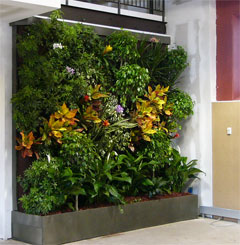According to Gary Mitchell, Director of the NSCORT (NASA Specialized Center of Research and Training) program at Purdue University, with team affiliates at Howard and Alabama A&M University, the program launched in 2002 with a 5 year, $10 million commitment from NASA, has now been shut down early because of pressures on the overall NASA budget.
http://center.e-enterprise.purdue.edu/wps/portal/_s.155/2007
NSCORT was not the only victim. Apparently, according to Mitchell (as told to Moon Society Director of Project Development David A. Dunlop) the BioPlex at JSC in Houston has been shut down as well. The BioPlex was a closed loop life support testbed consisting of three sections: a three story cylindrical living quarters similar to the Zubrin Mars habitats; a plant chamber where wheat is grown to provide food and exchange CO2 for O2: and an incinerator chamber used to eliminate solid waste and produce CO2
NASA has now decided to do life support at its Lunar Outpost the same way it does at the International Space Station, chemically. But these programs were definitely not the way to lay the foundations for settlements on the Moon and elsewhere. With the horse blinders of the steel and aluminum bending engineers, NASA assumed that life support was just another utility, something that could be added as an afterthought, tucked in a closet somewhere.
Good riddance! Nature abhors a vacuum. Now we can get on with life support research that has an open-ended future.
Biosphere II succeeded in that we learned quite a bit from its failure:
• concrete in curing, absorbs oxygen
• life support must be integrated with food production, but not limited to that
• farming must be automated lest the crew spend all its time cultivating crops so that they can eat
• it takes a lot of biomass to support a person: translate that into the biosphere hosts people, not vice versa
• biospherics must be thoroughly integrated with the physical pressurized complex: “Modular Biospherics.”
In coming issues of Moon Miners’ Manifesto, we will discuss the concept of Modular Biospherics, and some of the ways it can be integrated with an Outpost Modular Architecture. If the Outpost architecture is not modular from the start, then it is not expansion-friendly. It will have no chance to develop into a larger human community, the nucleus of a first human village beyond Earth.
So where can/must/will this modular biospherics research be done? An appreciable amount of research has already been done, and/or is underway by various “back to Mother Earth” groups pursuing “sustainable” and/or “off the grid” systems. While some of this has the aura of “hippie” about it, it is/would be serious mistake to dismiss/undervalue/ignore the work that has been done.
But clearly, this whole area of research now becomes a mission goal of the moonbase analog programs underway or contemplated by various groups. The Calgary Space Workers in Alberta are pioneering a demonstration modular outpost architecture, with a wetlands biosphere dome to be included.
The Moon Society moonbase analog task force continues to develop a modular plan as well, and proposes to integrate both Wolverton Toilet systems in each activity module, and Living Walls in connecting hallway modules, in addition to one or more Greenhouse modules, the first probably a vegetable farm, a possible second raising fruit. Plants in the Living Walls and Wolverton toilet systems, may be ornamental and/or include herb & spice plants. They all will contribute to oxygen production, air freshening, and visual delight, and thus morale.
http://www.wolvertonenvironmental.com/ww.htm
http://en.wikipedia.org/wiki/Living_wall
Living Wall installation, Baltimore, MD. This 110 sq ft (10 sq m) wall filters all the air for its 7,500 sf office building.
The Mars Society, at its Mars Desert research Station in Utah, goes no further than to treat graywater from sinks and showers for reuse as toilet flush water. We want to grab the bull by the horns and both treat black water (human wastes from toilet flushes) as well as grow a respectable portion of our salad stuffs and other vegetables, and later of fresh fruit as well as help refresh stall air in a much tighter module complex.
You can follow along in Moon Miners’ Manifesto. Matured articles will be posted on our new Moon Wiki at www.lunarpedia.org
Peter Kokh

